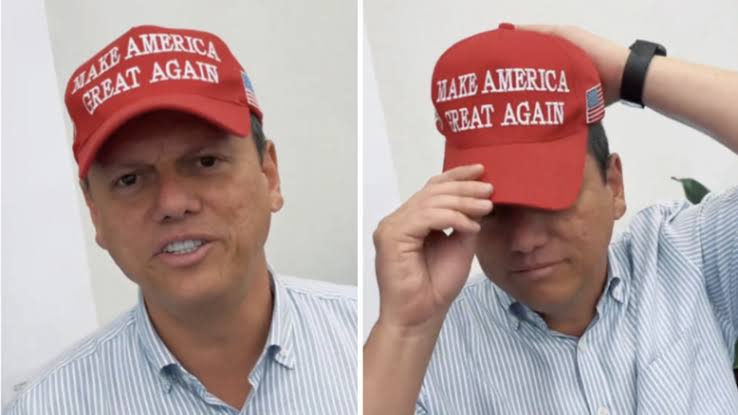
The governor of São Paulo, Tarcisio de Freitas, said on Saturday, 26, that 50% tariffs imposed by the United States on Brazilian exports can have significant economic effects in the state. The American measure comes into force on August 1st.
During participation in an event of XP Investimentos, held in the city of São Paulo, Tarcísio stated that the impact on Paulista Gross Domestic Product (GDP) can vary between 0.3% and 2.7%, depending on the duration and intensity of commercial sanctions.
“We have been doing many simulations and the effect can be very severe,” said the governor, as released by CNN Brazil.
The new tariffs reach various products exported by Brazil, including relevant sectors for the São Paulo economy. According to the state government, estimates indicate the possibility of loss between 44 thousand and 120 thousand jobs, as well as a reduction between $ 3 billion and $ 7 billion in salary wage.
The measure adopted by the US government is part of a more protectionist trade policy, resumed in President Donald Trump’s new term. The fare affects, among other products, items of the metallurgical, automotive, agricultural and technology industry.
São Paulo is the Brazilian state with the highest export volume and is responsible for a significant part of foreign trade in the country. The most exposed sectors of tariffs are precisely those with the highest concentration of production and jobs in the São Paulo territory.
According to data from the São Paulo Secretariat of Economic Development, the United States are among the main destinations of São Paulo exports. In 2024 alone, trade between Sao Paulo and the US moved more than $ 15 billion.
The projections presented by Tarcisio were prepared by state government technicians, based on different scenarios of tariffs and elasticity of international demand. The governor did not rule out the possibility of compensation measures, but indicated that the situation requires national articulation.
The National Confederation of Industry (CNI) and other entities in the productive sector have also warned of the possible effects of the measure, which can achieve the competitiveness of Brazilian companies in the US market. There is still no official definition of the federal government about any commercial response.
Impacts are expected to be felt in the second half of 2025, with reduction in exported volumes and potential deceleration in the generation of jobs linked to the export industry.
The government of São Paulo follows the situation with the Ministry of Finance and Itamaraty. Tarcisio argued that there is a joint effort to mitigate the economic effects of the measure and avoid a deeper retraction in the São Paulo economy.
Increased tariffs occurs in an international context marked by commercial tensions between developed countries and emerging economies. In addition to Brazil, other countries have also been the subject of similar measures by the United States, as part of a strategy of domestic reindustrialization and containment of commercial imbalances.
The government of Sao Paulo has not specified which sectors will be most affected, but experts point out that the automotive industry and agribusiness are among the most vulnerable. These sectors concentrate a large number of formal jobs and move high regional impact production chains.
The Federation of Industries of the State of São Paulo (FIESP) said it prepares a detailed survey on the most affected sectors and should submit proposals to the state government in the coming days.
In addition to direct effects on the São Paulo economy, there is concern with the reflection on public accounts. Any slowdown in economic activity may impact tax collection such as ICMS, the state’s main source of revenue.
The state government also studies measures to encourage the diversification of export markets, aiming to reduce the dependence on specific markets such as the American. The Paulista Agency for Investment and Competitiveness Promotion (Investsp) has already started mapping of opportunities in countries in Asia, Europe and Latin America.
While the direct effects of the tariff are not yet consolidated, the São Paulo government monitors developments and evaluates scenarios. Depending on the extent of the measurement, the impact can spread through different productive chains, from suppliers to retail trade.
US fares will be applied to an expanded product list, and their effective impact will depend on the behavior of international buyers and the ability of Brazilian companies to redirect exports or absorb costs.
From August 1, the scenario will become clearer for economic agents. Until then, the São Paulo government continues to work with short and medium-term projections, while awaiting a definition of the federal government’s trade policy against US sanctions.
Source: https://www.ocafezinho.com/2025/07/27/o-presente-grego-de-trump-ao-governo-tarcisio-em-sp/

